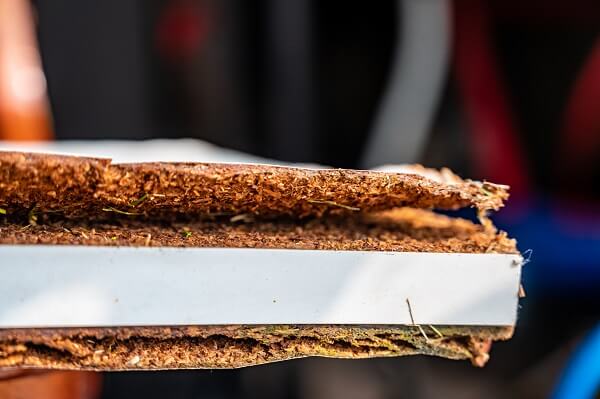If you have had a building inspection report in the past, then you know there are a wide range of issues an inspector can highlight. If the issue is particle board damage, how worried should you be?
What is particle board and is it different to chipboard?
Particle board and chipboard are essentially the same product. However, the two terms can sometimes be used to differentiate between the size of the wood “particles” used to make the board, the thickness and the density of the board.
Particle board usually refers to an engineered wood board made using tiny wood chips and timber particles and a binding resin that is then pressed into a board. It was traditionally a cheap option used to make cabinetry, countertops, and furniture (often coated in melamine or other veneers) but is no longer really used in the building industry today, denser MDF board having mostly replaced it in that market.
Chipboard is made in much the same way but using larger chips of timber and a binding resin. “Yellow tongue” chipboard can often be found in homes as a sub-flooring solution. It is inexpensive, comes in a variety of thicknesses, and is durable, which makes it a common foundational choice under carpet or other floorings in modern homes.
What does particle board damage look like?
When it comes to particle board damage, the most typical signs are swelling and warping. While it’s an economical choice for cabinetry and sub-flooring, it isn’t a suitable option for wet areas including backsplashes or under sinks because it can’t stand up to moisture or dampness.
What can it mean about bigger problems?
Damage to chipboard flooring is typically a result of water issues, whether it’s a slow leak, or something bigger. You might want to look at other areas of your home like your roof for water damage and find the cause. See our in-depth guide to water damage here.
One of the common problems with flooring is sinking or bowing. This can be the result of excessive moisture, but it can also be due to poor installation of the sub-floor structure. In this situation, a flooring professional can determine the best next steps.
Additionally, if there is inadequate ventilation for the subfloor, this can result in dampness or mould damage to the flooring. You can help prevent ongoing damage by improving sub-floor ventilation. This may require additional wall vents or the installation of mechanical ventilation.
How hard is it to repair particle board flooring?
Depending on the damage, best practice is to rip up the damaged particle board flooring section and replace it. You may only need to replace a small water damaged section. However, if the damage has been caused by poor installation, it may necessitate further investigation – with the issue likely to occur over time across the rest of the sub-flooring. The floor covering itself is likely to also require replacing.
Should you worry about damaged chipboard flooring in your report?
When an inspector visits your home, they carry out a visual inspection. They don’t dig up the floor or knock through a wall to find hidden problems. However, damaged chipboard flooring could highlight potential problems that may be hiding. So, floor damage is an obvious sign that there could be a bigger issue.
See other internal house issues we put in our comprehensive building reports here.
Find particle board damage or other red flags BEFORE you buy a property.
Book your pre-purchase building inspection with Action Property Inspections today.


